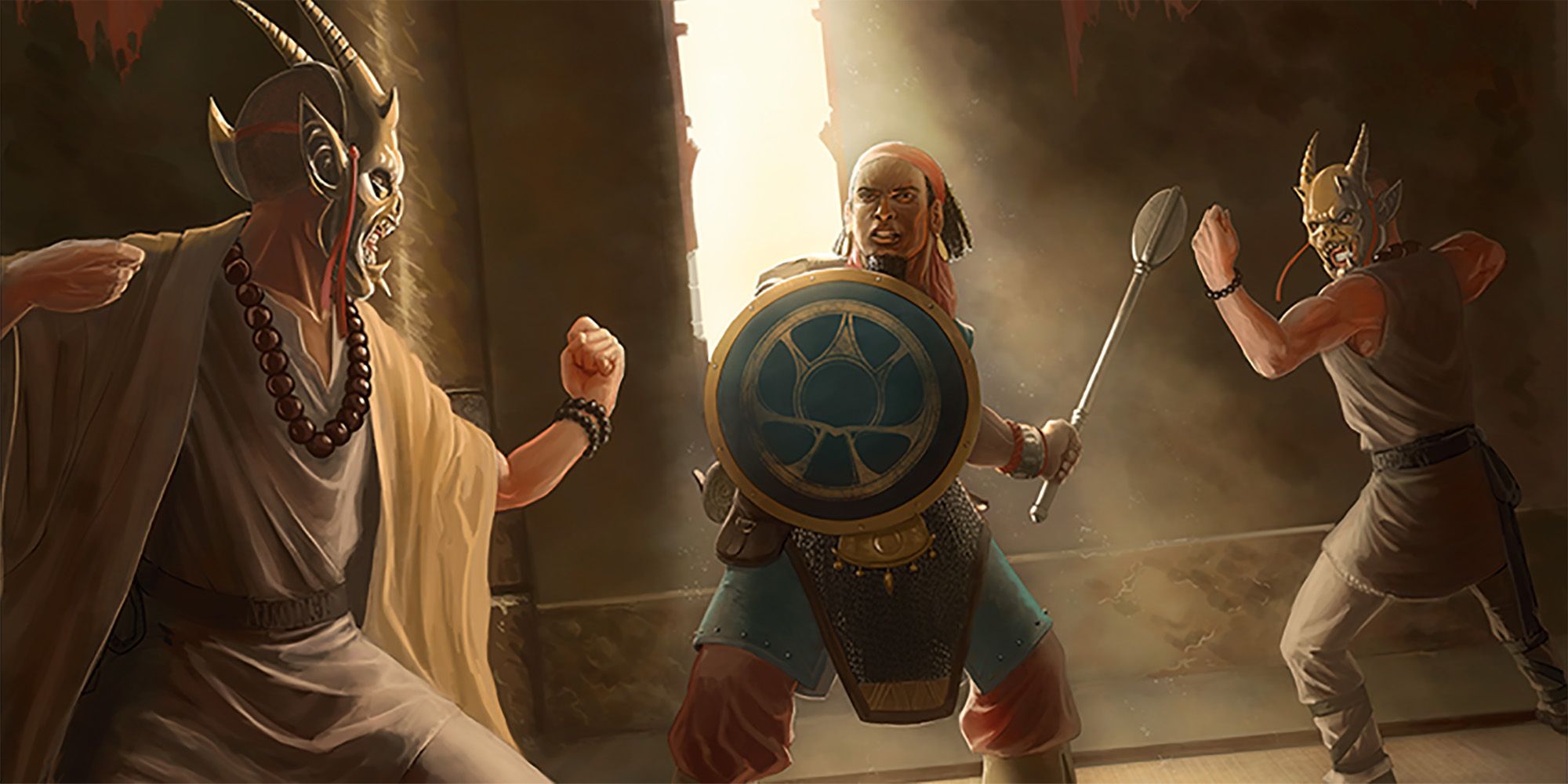Grave Domain clerics are a more peaceful take on a grim field in Dungeons & Dragons Fifth Edition. Unlike Death Domain clerics, D&D 5e's Grave Domain doesn't seek to inflict or pervert death. Instead, Grave Domain clerics uphold the sanctity of the passage between life and the afterlife.
Grave Domain clerics worship benevolent D&D death gods like the Raven Queen. They oppose undeath and other attempts to stave off fate. However, their protection of the threshold between life and death gives them exceptional support abilities to stave off an untimely demise. The Grave Domain is one of D&D 5e's strongest cleric subclasses, but specific build choices can make it even better.
Updated March 24, 2024 by Jenny Melzer: The Grave Domain cleric is one of D&D 5e's best cleric subclasses, and the right build choices can make it even better. This guide has been updated to provide even more information about the best Grave Domain cleric build tips, as well as to adhere to CBR's most current standards in formatting and presentation.
Grave Domain Cleric Build Summary
|
Ability Scores (In Order Of Importance) |
Wisdom, Constitution, Dexterity, |
|---|---|
|
Race |
Variant Human/Custom Lineage, Fairy, Shadar-Kai |
|
Background |
Acolyte, Faction Agent |
|
Feats |
Fey Touched, Resilient: Constitution, War Caster |
|
Spells |
Healing Word, Spiritual Weapon, Spirit Guardians, Heal |
|
Multiclass |
Fighter |
The Grave Domain Cleric Perks Start Strong at Level 1
|
Cleric Level |
Grave Domain Feature |
|---|---|
|
1 |
Circle of Mortality, Eyes of the Grave |
|
2 |
Channel Divinity: Path to the Grave |
|
6 |
Sentinel at Death's Door |
|
8 |
Potent Spellcasting |
|
17 |
Keeper of Souls |
10 Best Dungeons & Dragons-Inspired Video Games, Ranked
From dungeon-themed games like the original Final Fantasy to sci-fi hits like Knights Of The Old Republic, many video games draw inspiration from D&D.The Grave Domain cleric subclass is designed with healing in mind. The cleric spell list and a handful of powerful support abilities highlight them as one of D&D 5e's best healers from the off. However, this subclass isn't limited to one role. It exemplifies the cleric's versatility in D&D 5e. The Grave Domain is the best cleric subclass in D&D 5e for players who want to keep their allies alive and contribute to the party in many other ways.
Circle of Mortality lets the Grave Domain cleric cast Spare the Dying as a bonus action at range. In addition, whenever the Grave Domain cleric rolls a die to restore hit points to an unconscious ally, they heal the maximum amount. Bringing back unconscious creatures is far and away D&D 5e's most efficient way to heal, and the Grave Domain makes it even better. Furthermore, they can prevent allies from dying at a distance even if they lack spell slots to heal them.
Eyes of the Grave taps into the other side of a Grave Domain cleric's role in D&D 5e. It locates any undead within 60 feet of the cleric who aren't behind total cover or protected from Divination magic. This is a situational ability, but it targets some of D&D 5e's most common enemies. It will typically come up during a campaign.
Channel Divinity: Path to the Grave is a devastating debuff ability. The cleric causes the next attack that hits an enemy to deal double damage. This has no saving throw or attack roll. This is powerful with any party composition, but it's especially painful in parties with a rogue, paladin, or high-damage magic items.
Sentinel at Death's Door lets a D&D 5e Grave Domain cleric use their reaction to turn a critical hit against an ally into a regular hit. This can prevent unconscious allies from taking two failed death saves rather than one, or even prevent a character from going unconscious by minimizing damage.
Potent Spellcasting cements the Grave Domain cleric as a spellcaster over a more martial character. It provides a significant bonus to cantrip damage every turn, particularly for a cleric with high Wisdom. It lets a Grave Domain cleric deal plenty of damage without using their vital spell slots.
Keeper of Souls does something almost no other ability in D&D 5e does. When an enemy dies within 30 feet of the cleric, they can heal themselves or another creature equal to the enemy's hit dice. This requires no spell slot, no limited resources, and no reaction. Its one limit is a once-per-turn restriction, letting a Grave Domain cleric heal immense damage for free.
The Right Stats Make All the Difference When Building a Grave Domain Cleric
Dungeons & Dragons: Why Your Weakest Ability Score Is Your Greatest Role-Playing Tool
Often players view ability score penalties in Dungeons & Dragons as burdens -- but in fact, these penalties can provide the best role-play choicesWisdom is a cleric's spellcasting stat in D&D 5e. Grave clerics rely on their spellcasting almost to the exclusion of all else. As a result, Grave Domain clerics need high Wisdom even more than most other cleric subclasses. High Wisdom maximizes the Grave Domain's impressive healing and makes their offensive spells much more powerful when they fight back.
Constitution is the second most important stat for a Grave Domain cleric build. A Grave cleric's healing works far better on other unconscious creatures than it does themselves, meaning they must stay on their feet at all costs. Furthermore, a higher Constitution helps them make successful Concentration saving throws to get the most out of their most effective spells.
Unlike more martial cleric subclasses in D&D 5e, Grave Domain clerics don't get heavy armor. Some measure of Dexterity is vital for their Armor Class and other benefits like Initiative. Nonetheless, this isn't as important as Wisdom or Constitution. Most Grave Domain cleric builds can get away with 14 Dexterity.
The Best Race & Background For A Grave Domain Cleric Build
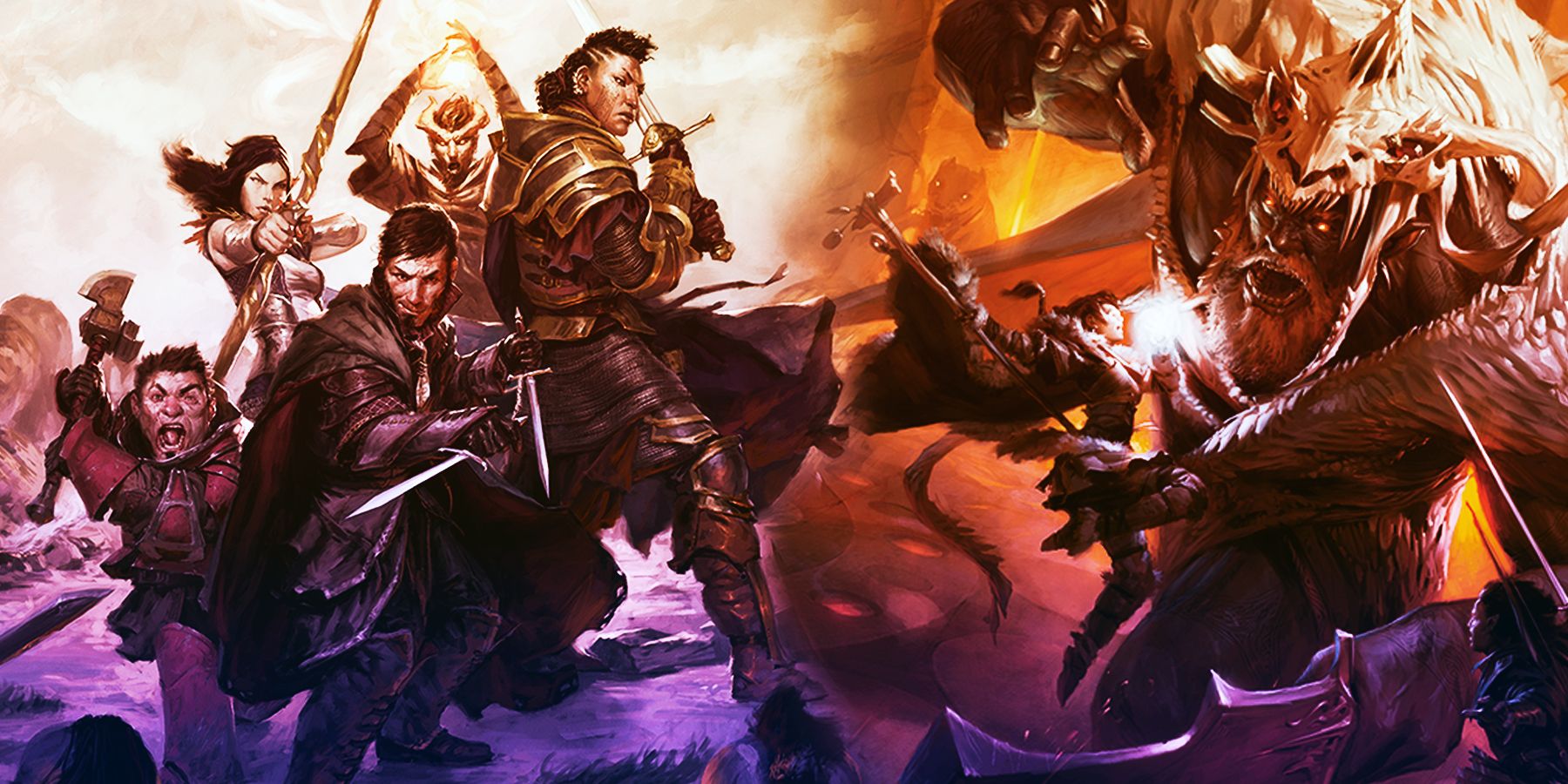
15 Legendary D&D Magic Items That Won't Break Your Game
There's nothing better than collecting new loot in Dungeons & Dragons, and there are plenty of powerful magic items that still keep the game fair.As with any other D&D 5e build, both variant human and custom lineage are among the best races for a Grave Domain cleric. A free feat is more than competitive with any other race's features due to its potential for synergy with a Grave cleric's features. An additional skill is another boon that should not be overlooked.
Fairy is another solid race for a Grave Domain cleric in D&D 5e. At-will flight is invaluable for any character, particularly a ranged spellcaster. Notably, many Grave Domain abilities require the character to be within 30 feet of combat situations. This is dangerous on the ground but very achievable in mid-air. The additional spellcasting provides tools not on a cleric's spell list. The only downside is a restriction on medium armor, meaning a fairy Grave Domain cleric build may require more Dexterity.
Shadar-Kai is a thematic choice for the Grave Domain, due to its ties to the Raven Queen. It's also an effective one. Blessing of the Raven Queen gives a short-range teleport that clerics lack. Its additional damage resistance lets the cleric teleport into a dangerous situation to help an ally without fear of harm. Proficiency in Perception also synergizes with the D&D 5e cleric's excellent Wisdom and frees up proficiencies in other skills.
Backgrounds should emphasize the Grave Domain cleric's Wisdom skills, potentially alongside Intelligence proficiencies or valuable day-to-day adventuring skills. Acolyte is a default choice for most D&D 5e clerics. Insight synergizes with high Wisdom, while Religion cements the Grave cleric as an undead expert. Faction Agent provides Insight and a free pick of Intelligence, Wisdom, or Charisma skills, letting a cleric specialize in a type of knowledge or double down on Wisdom with skills like Perception or Survival.
Best 5e Feats For Grave Domain Clerics
|
Cleric Level |
Recommended Feat |
|---|---|
|
1 (Human/Custom Lineage Only) |
Fey Touched, Resilient: Constitution |
|
4 |
Telekinetic |
|
8 |
Ability Score Improvement: Wisdom |
|
12 |
Resilient: Constitution |
|
16 |
War Caster |
|
19 |
Ability Score Improvement: Constitution |
The 15 Best 5e Feats For Clerics In D&D 5e, Ranked
For clerics in Dungeons and Dragons, the best feats are those that bolster their healing potential or damage output.Fey Touched is one of D&D 5e's best feats, with particular value for Grave Domain clerics. Given the short range of many Grave Domain abilities, a free teleport with Misty Step is always welcome. Clerics already get many of the best first-level Divination and Enchantment spells, but a free cast never goes amiss. In addition, its Wisdom bonus can increase a Cleric's modifier or set them up for their next Ability Score Improvement.
Telekinetic gives the cleric a valuable use for their bonus action that doesn't require a spell slot. A ranged shove with Wisdom has plenty of utility in combat, particularly for a cleric who wants to protect allies and often has to rush into danger. Invisible Mage Hand provides even more utility outside combat. Players should aim to take Telekinetic with an odd Wisdom score so it increases their modifier.
Resilient: Constitution has a key benefit for Grave Domain clerics. Many of the most effective cleric spells require Concentration. Proficiency in Constitution saving throws helps maintain these spells while protecting against countless other effects. It's another feat that players should take to round out an odd Constitution score for more hit points.
War Caster is another prime D&D 5e feat for most spellcasting builds. As ranged attackers, Grave Domain clerics don't often want to be in melee range. However, their close-up abilities often see them closer to enemies than they want. Replacing opportunity attacks with spells can capitalize on this situation if the cleric plays well. Advantage on Concentration saving throws is another significant boon.
The Best Spells For A Grave Domain Cleric
|
Cleric Level |
Domain Spells (Spells marked with an * are not normally on the cleric spell list) |
|---|---|
|
1 |
Bane, False Life* |
|
3 |
Gentle Repose, Ray of Enfeeblement* |
|
5 |
Revivify, Vampiric Touch* |
|
7 |
Blight*, Death Ward |
|
9 |
Antilife Shell*, Raise Dead |
Every Cleric Domain in Dungeons & Dragons, Ranked
Clerics are Dungeons & Dragons' premier support class, but every domain approaches this role in a completely different way.Despite their spellcasting prowess, Grave Domain clerics in D&D 5e don't have a particularly notable bonus spell list. Clerics can prepare most of the best healing spells by default. Instead, the Grave Domain spell list is a grab-bag of debuffs and lesser support spells with a handful of combat options.
Bane is an effective debuff that can save allies from countless attacks and open enemies to many saving throws. Gentle Repose, Revivify, and Raise Dead are spells players never want to use but are vital when needed. Death Ward is one of the best support spells that doesn't require concentration. Blight provides a genuinely useful combat option in a high-damage fire-and-forget option, but Vampiric Touch requires melee combat and should be a last resort for most Grave Doman cleric builds in D&D 5e.
Given the Grave Domain's powerful support abilities in D&D 5e, proper healing spells are a must. Healing Word is a lifesaver in the right situation, especially with Circle of Mortality. Similarly, Aura of Vitality can perform the same function turn after turn. Aid is both a healing spell and a way to stop allies from going down in the first place. Higher-level options like Mass Healing Word, Mass Cure Wounds, and Heal make for invaluable panic buttons in a crisis.
Grave Domain clerics are more than mere healers. They have valuable combat options from cantrips to ninth-level spells. Toll the Dead deals more damage than almost any D&D 5e cantrip, particularly with Potent Spellcasting. Spiritual Weapon can attack every turn with no Concentration. Spirit Guardians is an invaluable spell that protects the cleric in close-quarters combat, hinders enemies, and does respectable damage every turn. Higher levels provide spells like Harm and Fire Storm to help inflict damage.
Buffing and utility are other good uses for the Grave Domain cleric's spell slots and concentration. Guidance is one of the best cantrips for its ability check-boosting potential. Bless pays for itself several times over in most fights. Enhance Ability can come in clutch with preventing low rolls. Higher levels provide peerless utility or buffing with choices like Scrying and Holy Weapon.
Multiclassing A 5e Grave Domain Cleric
The Grave Domain cleric's focus on its spellcasting capabilities makes it well-suited to avoiding multiclassing. It's very effective with only levels in cleric. Nonetheless, there are some multiclass builds for a Grave Domain cleric in D&D 5e.
Starting with a level in fighter gives the Grave Domain cleric heavy armor and proficiency in Constitution saving throws, lessening the need for Dexterity and feat support. Two levels give Action Surge to cast two leveled spells in a single turn. However, this does set the Grave Domain cleric build back an entire spellcasting level.
Dungeons and Dragons
A fantasy roleplaying tabletop game designed for adventure-seekers, the original incarnation of Dungeons & Dragons was created by Gary Gygax in 1974.
- Franchise
- Dungeons & Dragons
- Original Release Date
- January 26, 1974
- Publisher
- Wizards of the Coast , TSR Inc.
- Designer
- E. Gary Gygax , Dave Arneson
- Player Count
- 4-8 Players Recommended
- Age Recommendation
- 12+
- Length per Game
- 3 hours +
- Expansions
- Dungeons & Dragons 2nd Edition , Dungeons & Dragons 3rd Edition , Dungeons & Dragons 4th Edition , Dungeons & Dragons 5th Edition


